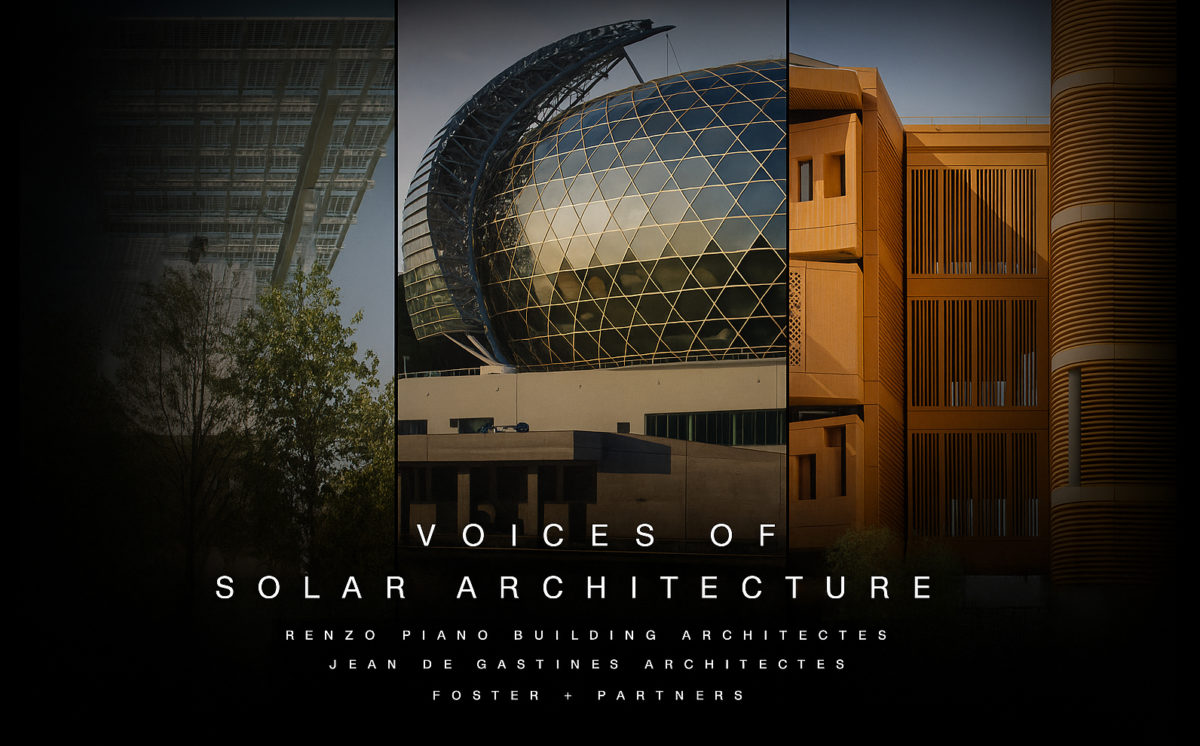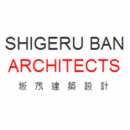By Greta Battaglia and Pierluigi Bonomo – Innovative Building Envelope research team
(ISAAC – SUPSI)
A new project exploring the evolution of photovoltaics in architecture through the voices of three renowned international architects
The Innovative Building Envelope (BIPV) research team at the Institute of Applied Sustainability to the Built Environment (ISAAC) of SUPSI announces the release of an innovative documentary project dedicated to the role of photovoltaics in contemporary architecture.
Three short films will tell, through exclusive interviews, the vision of three internationally acclaimed studios: Renzo Piano Building Workshop, Shigeru Ban Architects & Jean de Gastines Architects and Foster + Partners.
The “Solar Machines”: beyond traditional solar integration
At the heart of the project lies the innovative concept of the Solar Machine—architectural interventions that have moved beyond the mere integration of photovoltaic technology to become generative elements of architecture and urban space. The evolution of photovoltaics in architecture has gone through three distinct phases: the first “applied” generation, where panels were simply placed on rooftops; the second “integrated” generation of Building Integrated Photovoltaics (BIPV); and now what we see as the third generation: the Solar Machines. This new philosophy no longer hides behind discreet integration but takes on its own forms and functions, creating a completely new architectural language.
The voices of leading architects
The series of three interviews gives voice to leading figures from the three international studios, in dialogue with Pierluigi Bonomo, head of the SUPSI Innovative Building Envelope team, and Jean-Didier Steenackers, founder of the Sunsoak architecture studio, revealing insights, challenges, and achievements of different projects united by the common thread of solar energy.
In the project for CERN by Renzo Piano Building Workshop, photovoltaics are not simply integrated but become protagonists: part of the architectural identity and the narrative itself. Three large square canopies suspended above the pavilions protect and power the spaces below while filtering light with the softness and look of forest leaves.
With Shigeru Ban Architects & Jean de Gastines Architects, the focus is on poetry and structural elegance. In La Seine Musicale in Paris, the great mobile photovoltaic sail transforms from a simple energy device into a poetic gesture: an architecture that follows the sun, generates shade, creates movement, and shapes a unique atmosphere.
Foster + Partners demonstrate how solar thinking can be both global and deeply rooted in place, climate, and program. In Masdar City, in the desert of Abu Dhabi, the photovoltaic canopy floating above the urban blocks is not just a technical solution but an urban gesture: a systemic structure that generates both energy and shade while signalling a collective commitment to a new ecological paradigm. As Evangelos Giouvanos recalls, building it was a struggle, technically and economically, but its presence now defines Masdar’s urban identity.
A European project for an integrated and sustainable future
The docufilms were produced by the SUPSI Innovative Building Envelope team as part of the training activities supported by the European project SEAMLESS-PV, under the Horizon Europe research program co-funded by the European Union and the Swiss Confederation. The project involves 18 partners from 6 countries, including research institutes, universities, companies, and professional studios. Its main goal is to develop advanced, flexible, and highly integrable photovoltaic technologies, along with new training models and cross-sector collaborations, making them more accessible and competitive in the building market.
Within the project, the SUPSI Innovative Building Envelope team promotes and coordinates activities related to education and continuous training, with a particular focus on solar architecture. Through these interviews, and thanks to direct collaboration with world-leading studios, the team introduces a new way of sharing knowledge—combining technical expertise with visual and narrative dimensions to actively promote solar integration in contemporary architecture.
More broadly, the SUPSI Innovative Building Envelope team aims to encourage the real adoption of solar buildings with integrated photovoltaics as genuine construction materials, with particular attention to architectural quality and sustainable use in line with regulations and advanced quality standards. This is achieved through applied research, pilot and innovation projects, training, and market analysis, in collaboration with key stakeholders and companies in Switzerland and worldwide. It is a transversal approach that combines technology, architecture, and knowledge with real feasibility.
A special thanks, beyond the SEAMLESS-PV project and the SOLARCHITECTURE.ch platform, goes to Renzo Piano Building Workshop, Shigeru Ban Architects & Jean de Gastines Architects, Foster + Partners, SUNSOAK Design and Isplora.






